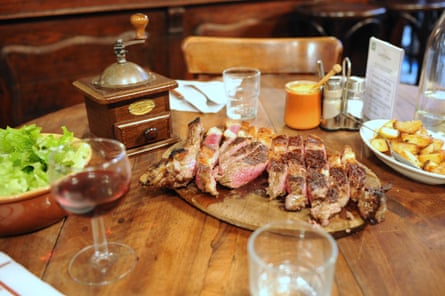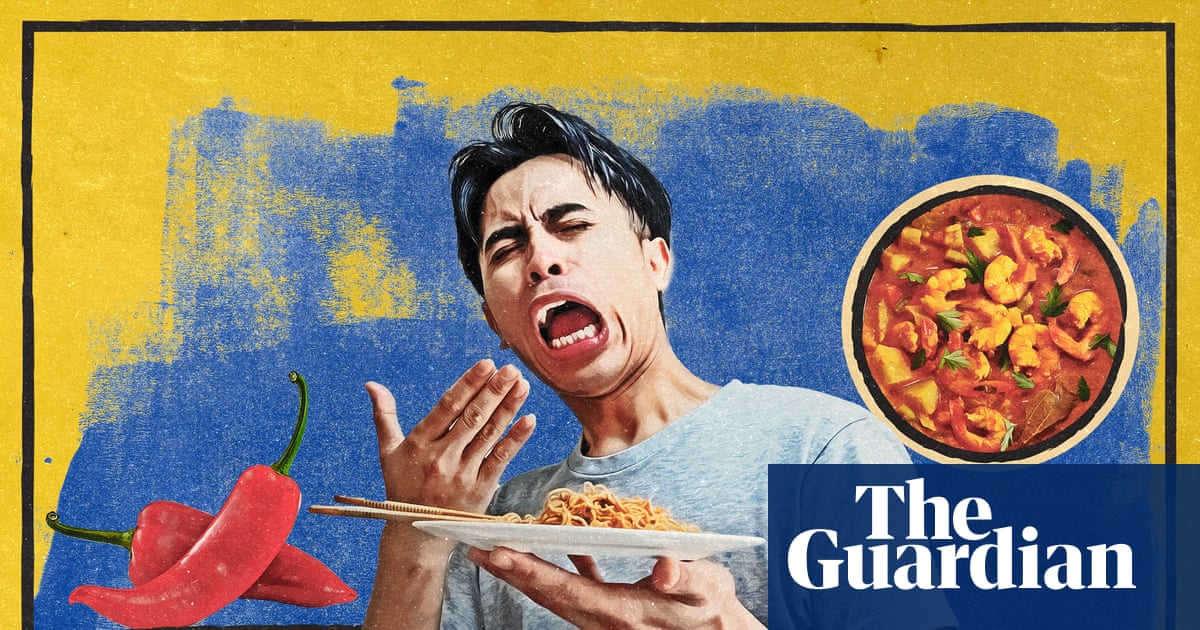I once ate seven bowls of ragù bolognese over the course of a single weekend. I was in Bologna, to be fair, and on a mission – to get to the bottom of spag bol (yes, I know it should be served with tagliatelle). A few years earlier, I did something similar with a Polish stew called bigos (a sort of hunter’s stew). I wanted to learn about its variations, its nuances, and I wondered what you could find out about a place if you dived into one dish in particular. In the case of bigos, I gleaned that the Polish are prepared to wait a long time for things to be done.
My friend Tom suffers from a similar obsession (just last month he dropped a dozen scotch eggs on a bank holiday Monday) and so when he said he was heading to Paris to eat multiple steak frites, I wasn’t exactly surprised. He wasn’t just going for a laugh, mind you: Tom runs a pub in London called the Carlton Tavern, and had come to the opinion that his steak and chips could do with a bit of zhooshing up. Hence the recce in Paris. But a man travelling all that way to examine meat and potatoes cannot do so alone, so I volunteered my services.
A staple of French brasserie cuisine, steak frites came to prominence during the 19th century, when Paris was filling up with a new, urban working class who wanted, well, filling up. It’s now a standard on any prix fixe menu alongside coq au vin, duck confit and beef bourguignon.
Despite its simplicity, the dish hasn’t avoided philosophical attention. In his essay collection Mythologies, the heavyweight thinker Roland Barthes gave steak frites a proper considering. Just as a cup of tea is traditionally regarded as the remedy to all varieties of strife in some parts of the world (“Lost your job? I’ll stick the kettle on …”), it seemed to Barthes that steak frites was imbued with special significance. For the philosopher, the juicy beef was a sign of vitality and brio, and when paired with the humble chip, the result was practically a dialectic on a plate. Simply put, steak frites is more than the sum of its parts.
Taking advantage of the Eurostar Snap service, which allows you to select the day of travel but not the exact time, I bag myself a discounted return for just £90. And so, within three hours of leaving London, we find ourselves tucking into our first steak.
Robert et Louise

This homely outfit in the Marais has been going since the 1950s and cooks steaks over an open fireplace. The cut is entrecôte (AKA ribeye), which is served with sauteed potatoes and a green salad dressed with a classic vinaigrette. The steak is good, my medium rare (à point) is trumping Tom’s rare (saignant), the extra minute or so giving the fat a chance to render. There’s no sauce as such, but the mingling of dressing, meat juices and mustard makes a topping unnecessary. I ask the barman what he thinks of English wine. He says it’s a nice idea. €25, 8/10
Brasserie Lipp

A respectable amount of time later, we take on a rump on the other side of the Seine, on Boulevard Saint-Germain. Founded in 1880, Lipp is a classy joint – all vast mirrors and gleaming banquettes – and this particular lunchtime the place is abuzz. My slab (or pavé) of rump is fair to middling, but the fries aren’t as chipper as they might be. Once again there is no sauce, while the accompanying salad – some undressed lamb’s lettuce – brings little to the party. The best feature is the performance of our waiter, whose service manages to be exceptionally brusque yet unquestionably friendly. François explains that the 12 on his lapel conveys his standing in the pecking order. ‘‘I started at 23 and aspire to single digits,’’ he says. “And what happens when you get to one?” I ask. “You die.”
€25, 6.5/10
Le Pick-Clops

On François’ recommendation, we proceed to Le Pick-Clops, a laid-back bistro on the right bank of the river that is popular with students. Having learned that 2m bottles of wine are consumed in Paris each day, we do our bit to uphold this remarkable statistic by seeing off a carafe while waiting on our meal. The steak, when it comes, is onglet, or butcher’s steak, a cut that is typically dark and lean owing to the muscle’s working-class background. Here it’s served with a classically dressed green salad, a small gravy boat of blue cheese sauce and dauphinoise potatoes. There’s some chew on the beef but I don’t mind that, for it gives the dish’s other elements a chance to collaborate. On leaving, I ask the bartender where we should go next. He offers an enormous shrug and says: “Nowhere.” I give him a look designed to encourage elaboration. “Any place can do this dish,” he explains. “Don’t think about it. Just go.”
€15, 8.5/10
after newsletter promotion
Bouillon République

I’d read about our next stop online. It’s on Boulevard du Temple in the 3rd arrondissement. In French, bouillon means a broth or a stock and also a large restaurant doing classic dishes at good prices – think oeuf mayonnaise for €2.50. While bouillons have been around for ages, this one is a fresh incarnation – though you’d be forgiven for thinking otherwise, seeing how retro the decor is. The rump steak asks a bit too much of my mandible, while the fries give the impression they were cooked a while ago – conceivable in a place with up to 450 covers. The pepper sauce is decent, but a topping cannot carry a plate on its own.
€12.60, 6.5/10
Le Bastringue

Ambling along the Canal Saint-Martin, I remember the words of the chap at Le Pick-Clops, who told us to go nowhere. For no other reason than it’s giving off Amélie vibes and it must have been all of 10 minutes since we last ate, we walk into La Bastringue. The place is busy with local people. Red paint, a view of the kitchen, the noises of a French lunchtime – the atmosphere is deliciously Gallic. The steak is poire de boeuf, a pear-shaped cut from the top of the hind leg that is beloved by butchers for being especially flavourful and tender. It comes with a kind of slaw, miniature roasties and a shallot sauce. Having noticed others doing it, I ask the waiter for toutes les sauces, a small amount of every sauce on the menu, which he duly delivers. With my dipping options tripled, the meal proves a delight, and we declare Le Bastringue our winner, meaning that “nowhere” has triumphed. A lesson has been learned: sometimes one is better off skipping the queue, ignoring the hype and just going anywhere instead.
€14, 9/10
Waiting for the train home at Gare du Nord, Tom starts sketching out his perfect steak frites. By the time we get back to London, he has the details nailed down. Which steak made the cut? What potatoes prevailed? There’s only one way to find out: you’ll have to visit his tavern. (Or I could just tell you: it’s onglet with skinny chips, dijon mustard and some smartly dressed leaves.)
For the record, my perfect steak frites cannot be put on a menu, for it contains no fixed elements or recurring features. It is the one that takes you by surprise.
Shitty Breaks: A Celebration of Unsung Cities is published by Icon Books. To support the Guardian, order your copy at guardianbookshop.com. Delivery charges may apply

 3 hours ago
7
3 hours ago
7

















































